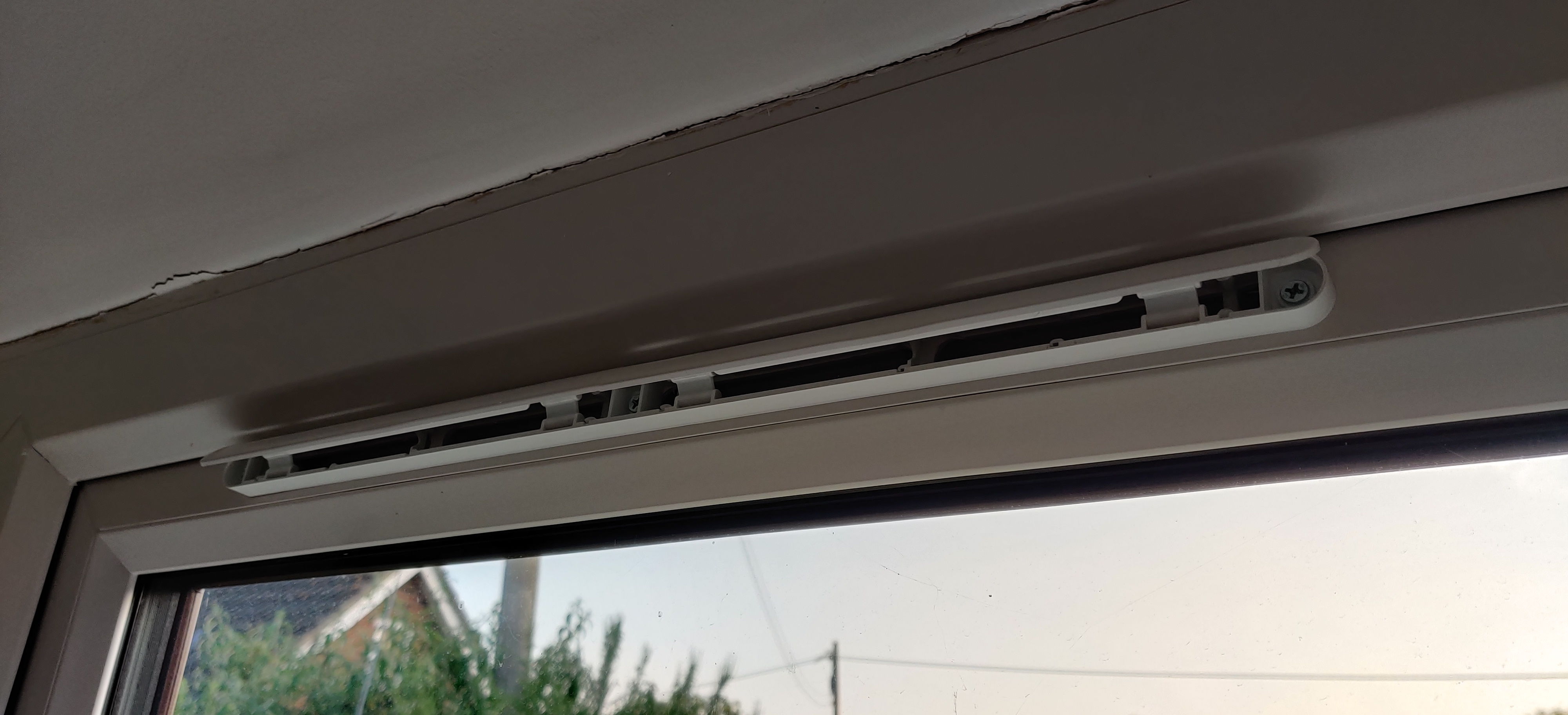Trickle vent on:
[Wikipedia]
[Google]
[Amazon]
 A trickle vent is a very small opening in a
A trickle vent is a very small opening in a
 A trickle vent is a very small opening in a
A trickle vent is a very small opening in a window
A window is an opening in a wall, door, roof, or vehicle that allows the exchange of light and may also allow the passage of sound and sometimes air. Modern windows are usually glazed or covered in some other transparent or translucent ma ...
or other building envelope
A building envelope or building enclosure is the physical separator between the conditioned and unconditioned environment of a building, including the resistance to air, water, heat, light, and noiseSyed, Asif. ''Advanced building technologies for ...
component to allow small amounts of ventilation in spaces intended to be naturally ventilated when major elements of the design—windows, doors, etc.—are otherwise closed. Trickle vents are used extensively in Europe
Europe is a continent located entirely in the Northern Hemisphere and mostly in the Eastern Hemisphere. It is bordered by the Arctic Ocean to the north, the Atlantic Ocean to the west, the Mediterranean Sea to the south, and Asia to the east ...
and are integrated into window frames to provide minimum ventilation requirements for naturally-ventilated spaces.
Energy efficiency ratings
The application of trickle vents in naturally-ventilated spaces can help contribute to IEQ Credit 2 under theLEED
Leadership in Energy and Environmental Design (LEED) is a Green building certification systems, green building certification program used worldwide. Developed by the non-profit U.S. Green Building Council (USGBC), it includes a set of rating ...
green building rating system. LEED EA Credit 2 references CIBSE Applications Manual 10, which provides advice on the design of naturally-ventilated spaces, recommending the installation of trickle vents in naturally-ventilated spaces. Within the UK, the application of trickle vents is required to meet the requirements of the Building Regulations; requirements are described in Guide F, Means of Ventilation.
Effect on indoor environment
Trickle vents will help avoid problems associated with poor ventilation in naturally-ventilated spaces, including reduced risk ofcondensation
Condensation is the change of the state of matter from the gas phase into the liquid phase, and is the reverse of vaporization. The word most often refers to the water cycle. It can also be defined as the change in the state of water vapor ...
, avoided over-ventilation (minimizing energy consumption
Energy consumption is the amount of energy used.
Biology
In the body, energy consumption is part of energy homeostasis. It derived from food energy. Energy consumption in the body is a product of the basal metabolic rate and the physical acti ...
), and improved comfort through draft avoidance.
References
Further reading
*Crafti, Stephen. ''The Ultimate Urban Makeover: Unique Architectural Renovations.'' Images Publishing, 2007. . {{DEFAULTSORT:Trickle Vent Ventilation Passive ventilation Indoor air pollution